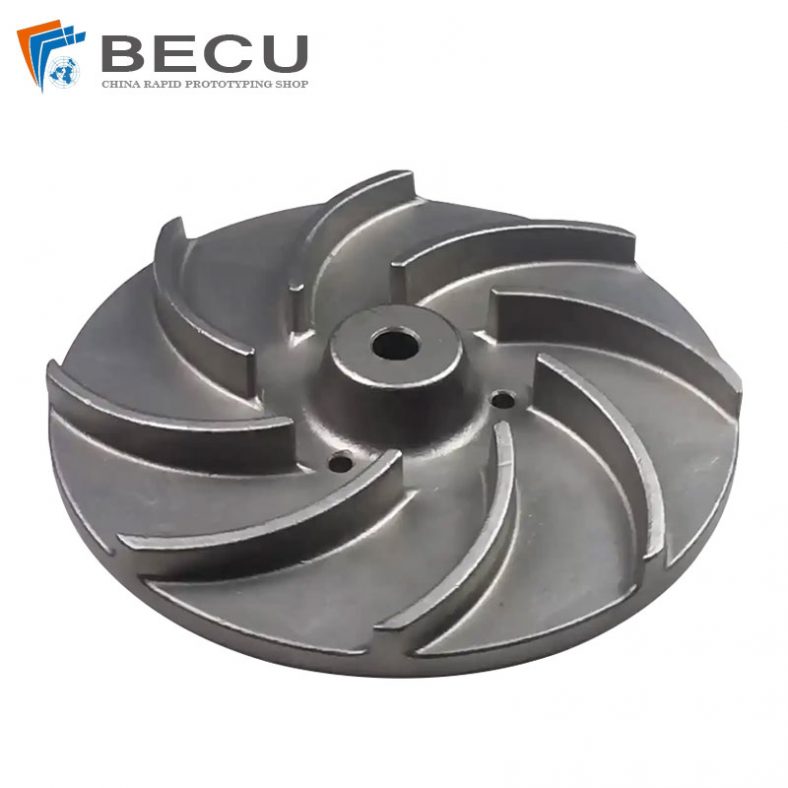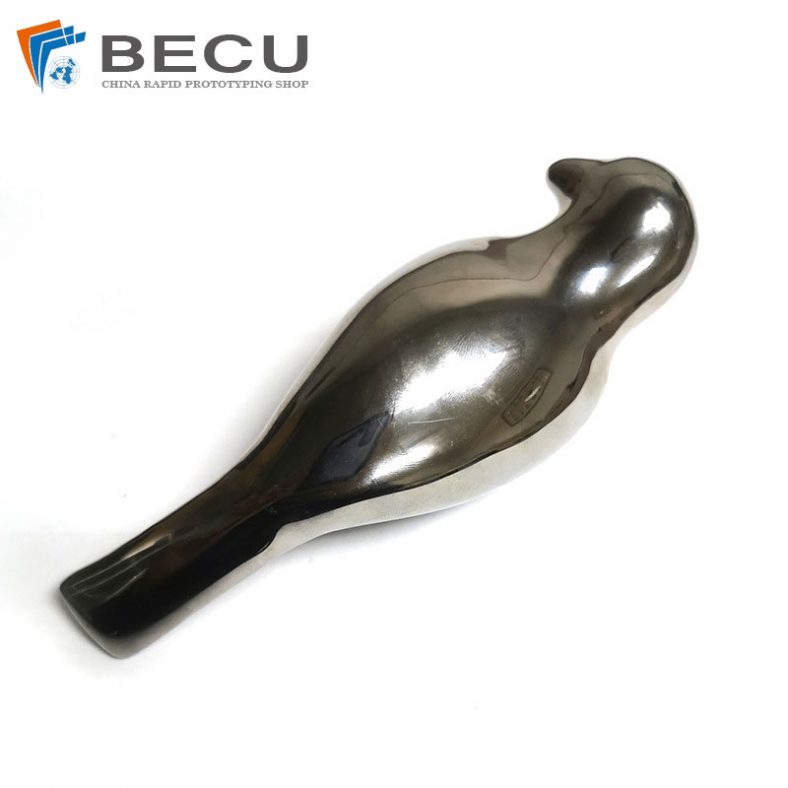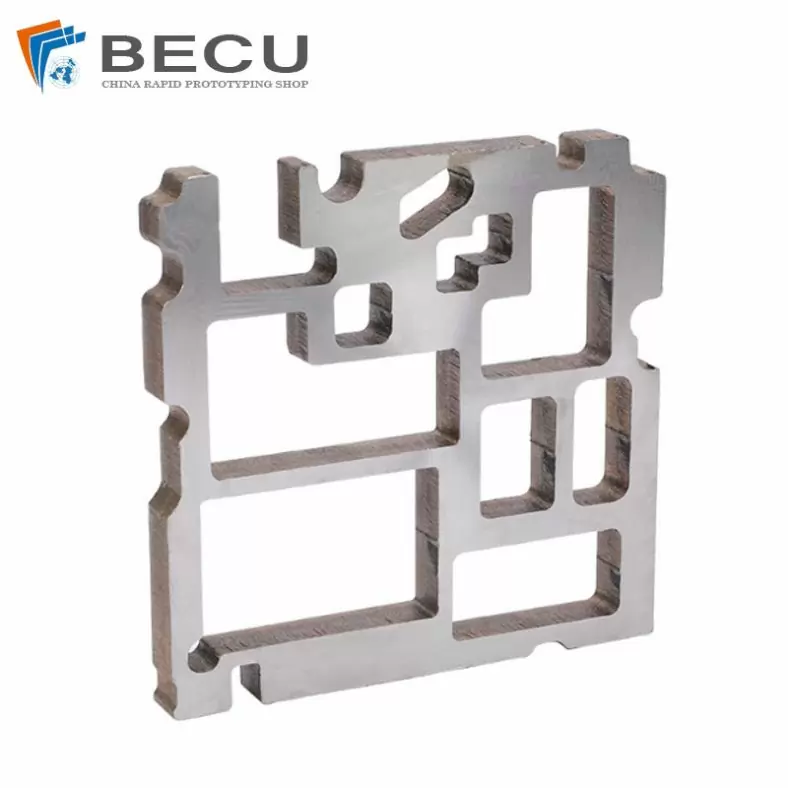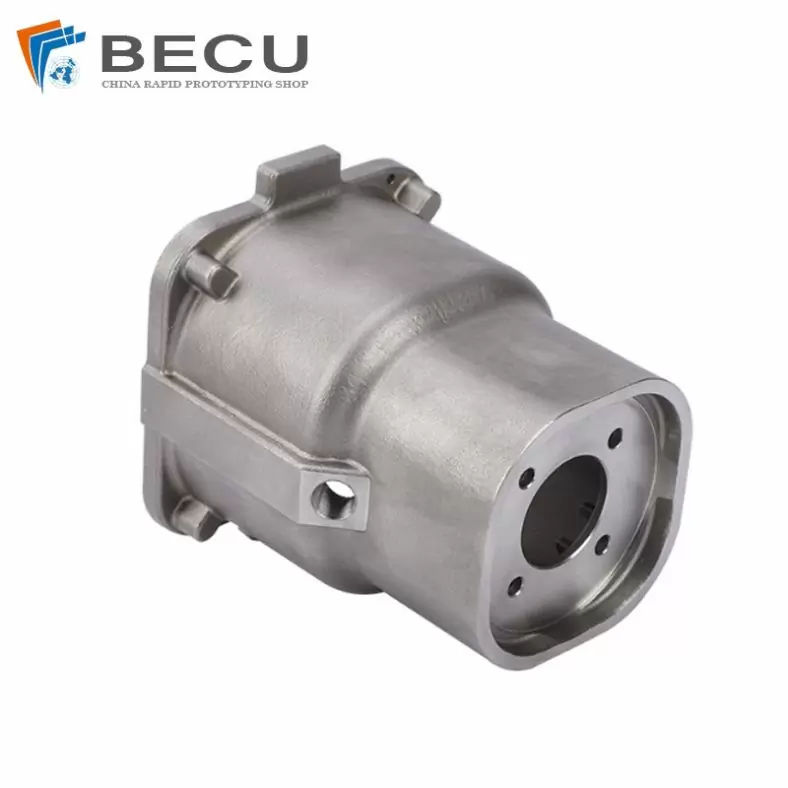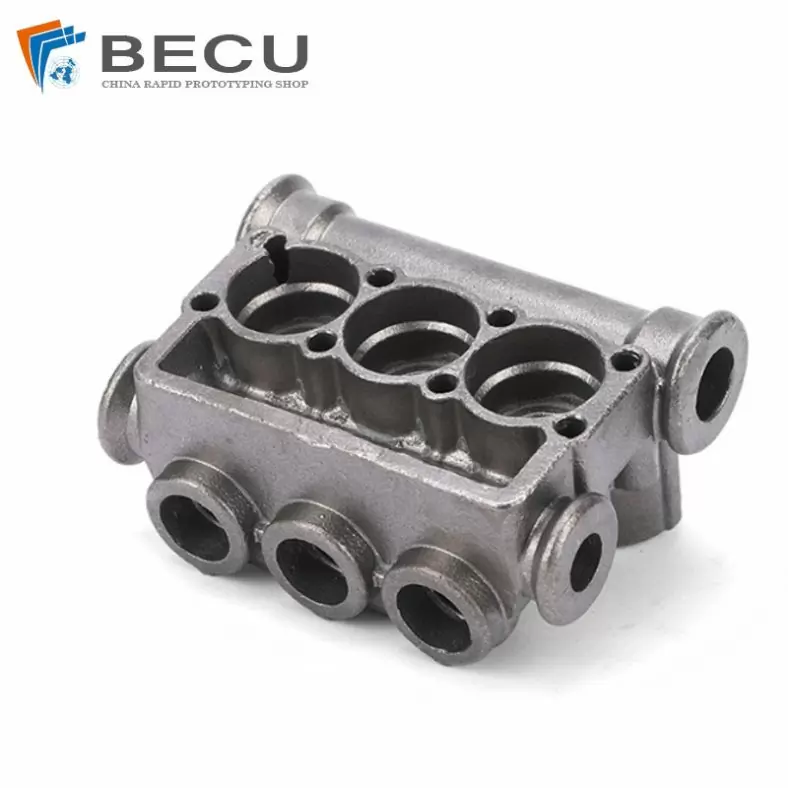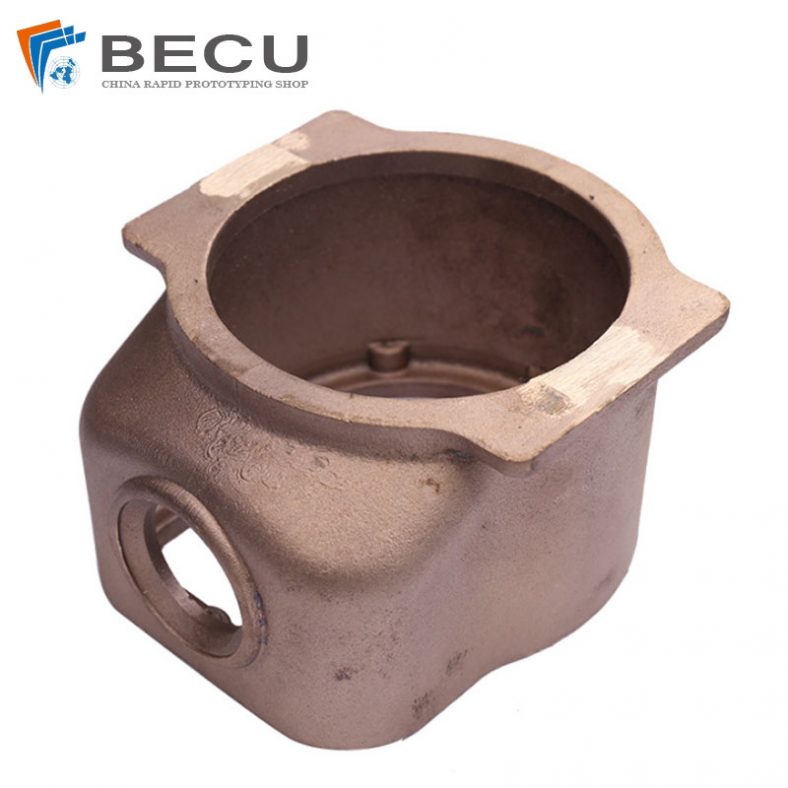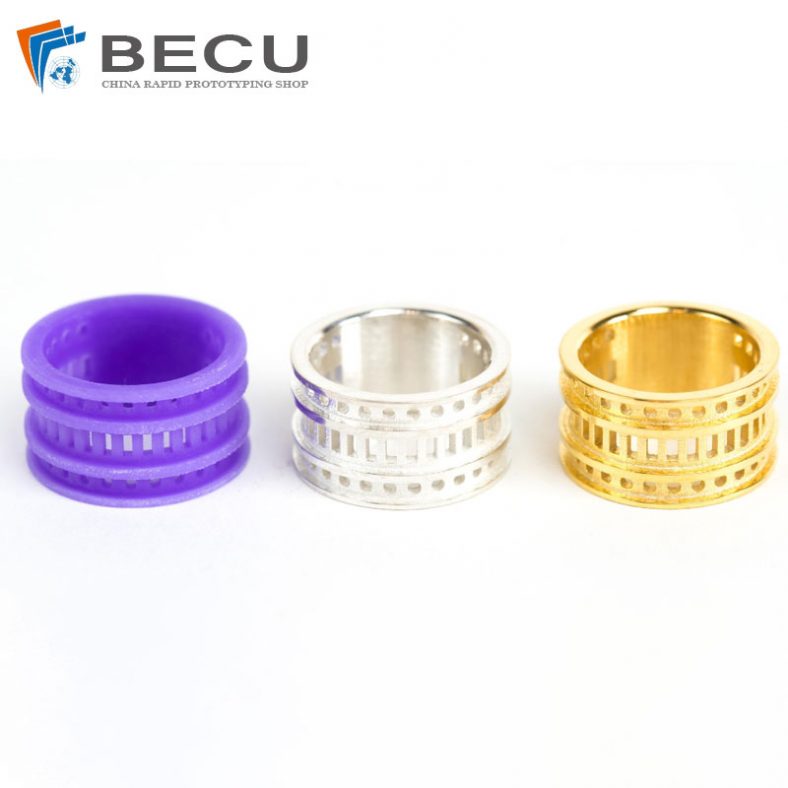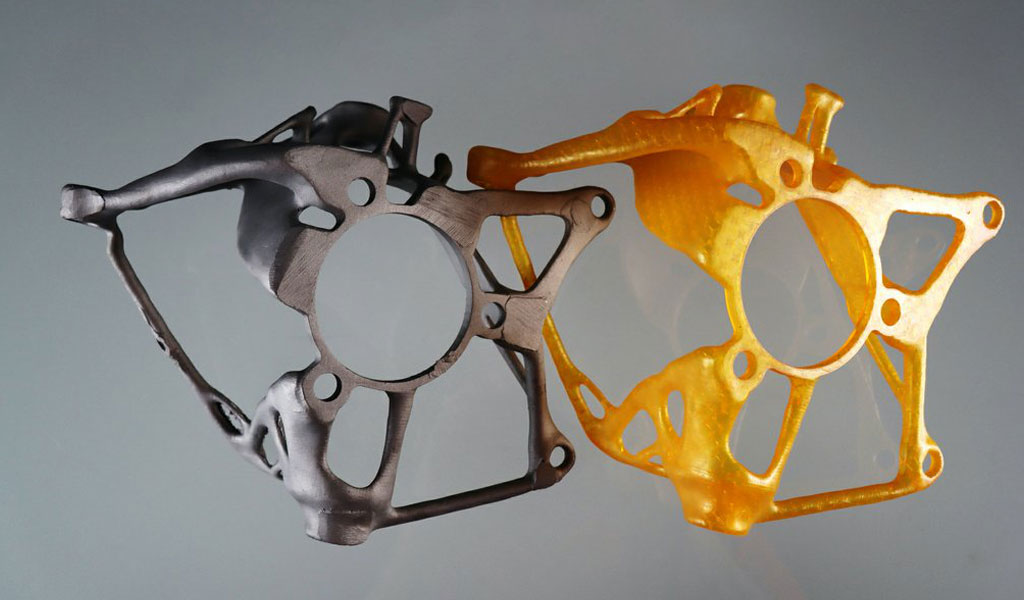
Investment casting is a precision metal casting process that dates back thousands of years. The process begins with the creation of a wax pattern, which is then coated with a ceramic material to form a mold.
Once the mold is hardened, the wax is melted and drained, leaving behind a cavity in the shape of the desired part.
Molten metal is then poured into the mold, filling the cavity and creating the final part once the metal solidifies.This manufacturing method has gained popularity due to its ability to produce parts with complex geometries and tight tolerances.
However, when considering investment castings for a project, one of the most important aspects to consider is the cost.In this article, we will delve into the various factors that influence the cost of investment castings and explore the benefits and applications of this versatile manufacturing process.
Common Metal Materials Used in Investment Casting
The cost of metal materials is a crucial factor that significantly influences the overall cost of investment castings. Different metals and alloys have varying prices due to factors such as availability, demand, processing complexity, and purity.
In this section, we’ll delve into the cost of some commonly used metal materials in investment casting and explore the factors that contribute to their pricing.
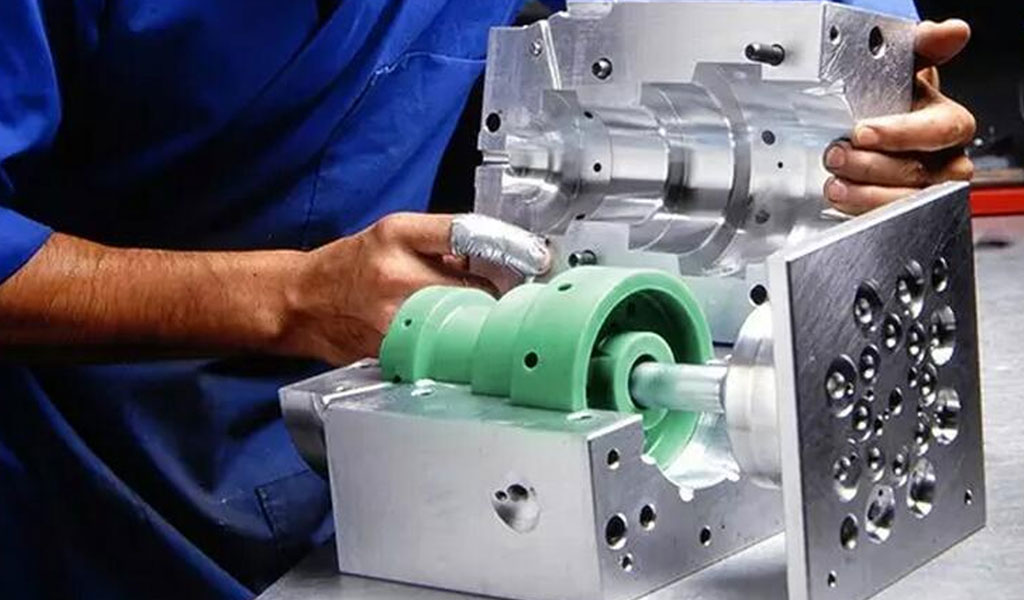
Stainless Steel
Stainless steel is one of the most widely used materials in investment casting due to its corrosion resistance, strength, and versatility. The cost of stainless steel casting can vary depending on the grade and composition. Common grades like 304 and 316 stainless steel are relatively affordable, while specialty grades with specific properties can be more expensive. The price of stainless steel is influenced by nickel and chromium content, with higher percentages generally resulting in higher costs.
Carbon Steel
Carbon steel is another popular material choice for steel investment casting due to its strength and affordability. The cost of carbon steel is generally lower than stainless steel, making it a cost-effective option for many applications. However, the price can vary based on the carbon content and additional alloying elements present in the steel.
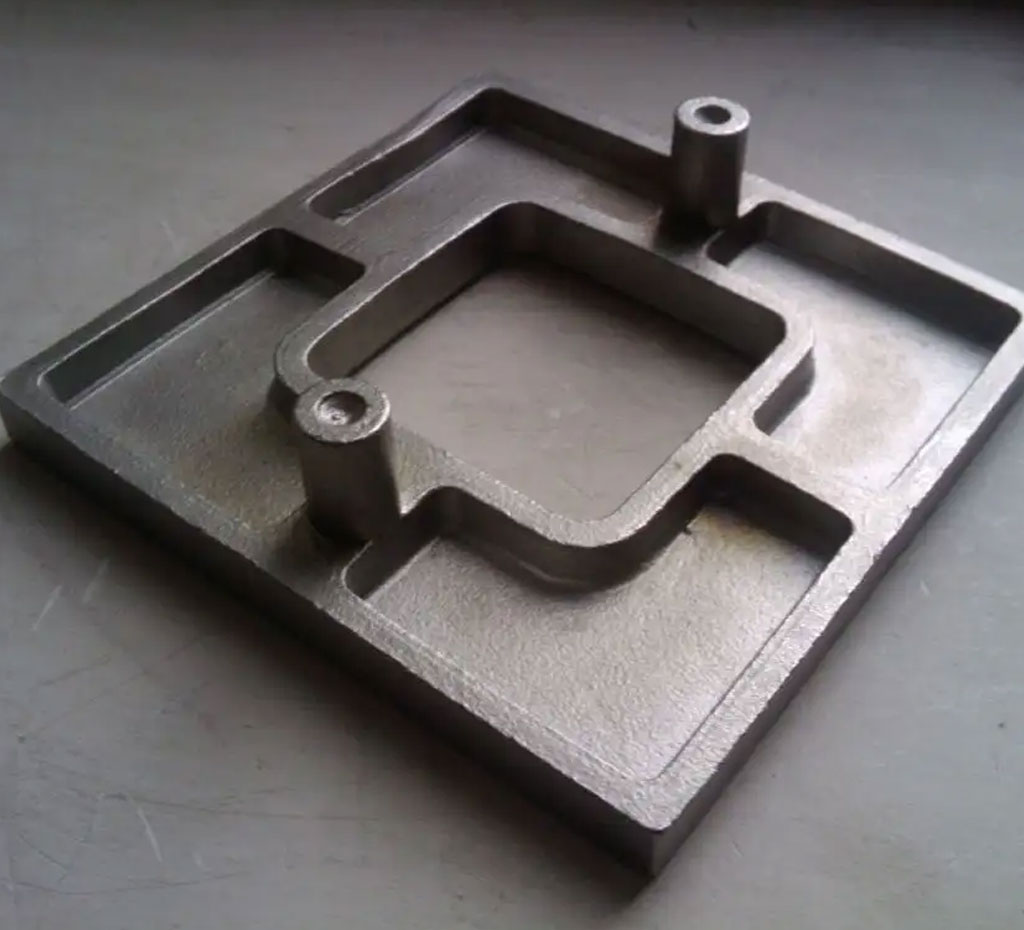
Aluminum
Aluminum is known for its lightweight, corrosion resistance, and thermal conductivity, making it suitable for various applications in aerospace, automotive, and consumer goods. The cost of aluminum casting is influenced by the purity and alloy composition. Pure aluminum (aluminum 1100) is generally cheaper than aluminum alloys like 6061 or 7075, which contain additional elements such as silicon, magnesium, and zinc.
Superalloys
Superalloys are high-performance alloys that offer exceptional strength, heat resistance, and corrosion resistance, making them ideal for demanding applications in aerospace, power generation, and automotive industries. Superalloys like Inconel, Hastelloy, and Monel are more expensive than conventional metals due to their unique properties and complex composition.
Confirm Castings Are Available For Production
Certainly, confirming the availability of castings for production is a crucial step before proceeding with an china investment casting project. Availability can be influenced by several factors, including material availability, production capacity, lead times, and existing commitments. Here’s a guide to confirming the availability of castings for production:
Contact the Manufacturer or Supplier
Check Material Availability
Evaluate Production Capacity
Review Existing Commitments
Consider Lead Times
Request a Production Schedule
Confirm Quality Assurance Measures
Secure a Production Agreement
Confirming the availability of castings for production is a critical step in the investment casting process. By contacting the manufacturer or supplier, checking material availability, evaluating production capacity, reviewing existing commitments, considering lead times, requesting a production schedule, confirming quality assurance measures, and securing a production agreement, you can ensure a smooth and successful production process. It’s essential to communicate openly with the manufacturer, provide clear specifications, and plan ahead to optimize costs, meet deadlines, and achieve the desired quality standards for your investment casting project.
Factors Affecting Output Rate of Castings
The output rate of castings refers to the number of castings produced within a specific timeframe, typically measured in pieces per hour, day, or week. The output rate is influenced by various factors, including the complexity of the parts, size and weight of the castings, production equipment, and workforce efficiency. Understanding the output rate is crucial for planning production schedules, estimating costs, and meeting project deadlines. Here’s a detailed look at factors affecting the output rate of castings and how to optimize it:

Part Complexity and Design
Size and Weight of Castings
Production Equipment and Technology
Workforce Efficiency and Skill Level
Production Setup and Changeover Time
Post-Casting Processes
Our Investment Casting Quote Chart
| Offeror | Time quotes | ||||
| Casting Number | Casting drawings | Casting drawings | Part Number | 80/9-81 | 80/9-81 |
| Part Name | Client’s Name | ||||
| Parts unit weight | 0.92 | 0.92 | Casting Material | 316L | 316L |
| Casting Material Standards | None | None | Annual Demand | 2000 | 2000 |
| Special Process | None | None | Special Testing | None | None |
| Cost Details | Standard Cost | Actual Cost | Cost Coefficient Item | Cost Factor | Remark |
| Material Cost (C1) | 3.99 | 3.67 | Difficulty Coefficient (K1) | 1.20 | |
| Metal Materials (C2) | 24.78 | 22.80 | Accuracy Coefficient (K2) | 1.00 | Quote Based On CT6 Level |
| Labor Cost (C3) | 5.29 | 4.86 | Weight Coefficient (K3) | 1.00 | 1.00 |
| Testing Cost (C4) | 3.67 | 3.38 | Batch Coefficient (K4) | 1.00 | 1.00 |
| Manufacturing Overhead (C5) | 14.42 | 13.27 | Process coefficient (K5) | 1.00 | 1.00 |
| Manufacturing Cost (C) | 52.15 | 47.98 | |||
| Total Cost Coefficient (K) | 1.20 | ||||
| Management expenses % (M) | 1.08 | ||||
| Expected profit % (L) | 1.15 | ||||
| Sales tax % (R) | 7.66 | Value added tax is calculated at 17% | |||
| Casting base price (S) | 62.18 | Cost price (including management fees) | |||
| Casting price (G1) | 71.51 | Sales price of castings excluding tax (reference) | |||
| Casting price (G) | 79.17 | Casting sales price including tax (reference) |
Total coefficient K=K1xK2xK3xK4xK5……
Sales tax (R)=(B21-C11-C10)*17%
Casting base price (S) =KxCxM
Casting price (G1) =SxL
Casting price (G) =G1+R
Casting weight is for reference only as 3D printing model weighing
The output rate of castings is a critical factor that impacts production efficiency, costs, and lead times in investment casting. By understanding the factors affecting the output rate and implementing strategies to optimize production processes, equipment, workforce skills, and scheduling, manufacturers can increase the output rate, improve productivity, and achieve better overall performance. Continuous monitoring, analysis, and improvement are essential to maintaining a competitive edge and meeting the evolving demands of the investment casting industry.
Cost Of Wax Molds
The cost of wax molds is an important consideration in investment casting, as it forms a significant portion of the total production expenses. Wax molds serve as the patterns for creating the ceramic molds used in investment casting. The cost of wax molds can vary based on several factors, including the complexity of the part, size, material, quantity, and production method. Here’s a detailed breakdown of the factors influencing the cost of wax molds and strategies to optimize these costs:
Factors Affecting the Cost of Wax Molds
- Complexity and Design of the PartThe complexity and intricacy of the part design directly impact the cost of wax molds. Parts with intricate geometries, fine details, or complex features require more time and skill to create the wax patterns, increasing the production costs.
- Size and DimensionsThe size and dimensions of the wax mold influence the amount of wax material required and the production time. Larger and more substantial molds require more wax material and may require additional handling and processing steps, contributing to higher costs.
- Material SelectionThe type and quality of wax material used for making molds can affect the cost. Different waxes have varying prices based on their properties, purity, and availability. Specialty waxes designed for specific applications or high-performance requirements may be more expensive than standard waxes.
- Quantity of MoldsThe quantity of wax molds produced in a batch can impact the unit cost. Producing larger quantities of molds in a single production run can help spread out the setup and overhead costs, resulting in lower unit costs compared to smaller production batches.
- Production MethodThe production method used for creating wax molds can influence the cost. Automated or high-speed production methods may require higher initial investments but can help reduce labor costs and increase production efficiency, thereby lowering the overall cost per mold.
- Labor CostsLabor costs for skilled workers involved in mold making and pattern assembly contribute to the overall cost of wax molds. Skilled labor is required for creating accurate and high-quality wax patterns, which can affect the production costs.
Optimizing the Cost of Wax Molds
- Simplify Design and Reduce Complexity:Simplifying the part design and reducing complexity can help lower the cost of wax molds. By minimizing intricate features, fine details, and complex geometries, you can reduce the time and effort required for pattern making, thereby reducing costs.
- Optimize Material Usage:Efficiently using wax material and minimizing waste can help optimize the cost of wax molds. Utilizing nesting and layout optimization techniques, optimizing sprue and gating systems, and minimizing excess material can help reduce material costs and improve efficiency.
- Bulk Ordering and Production:Ordering and producing wax molds in bulk or larger quantities can help lower the unit cost. By consolidating orders and increasing production volumes, you can take advantage of economies of scale and negotiate better pricing with suppliers.
- Invest in Automation and Technology:Investing in automation, advanced machinery, and technology for wax mold production can help improve efficiency, reduce labor costs, and optimize the overall cost. Automated wax injection systems, CNC machining, and digital design tools can streamline production and enhance precision.
- Evaluate Material Options:Evaluating different wax materials and suppliers to find cost-effective options without compromising quality can help reduce the cost of wax molds. Consider exploring alternative materials or suppliers offering competitive pricing, bulk discounts, or volume incentives.
- Continuous Improvement and Lean Practices:Implementing continuous improvement practices, lean manufacturing principles, and process optimization techniques can help identify and eliminate inefficiencies, reduce waste, and lower the cost of wax molds. Regularly reviewing and improving production processes, workflows, and performance metrics can drive cost reduction and enhance competitiveness.
The cost of wax molds is a significant component of the overall expenses in investment casting. By understanding the factors influencing the cost of wax molds and implementing strategies to optimize design, material usage, production methods, and workflow efficiency, manufacturers can reduce costs, improve profitability, and remain competitive in the market. Investing in technology, automation, and continuous improvement initiatives can help streamline production, enhance quality, and achieve cost-effective wax mold production for investment casting applications.

Quantity Of Shell Layers
The quantity of shell layers in investment casting plays a crucial role in determining the quality, strength, and surface finish of the final casting. The shell layering process involves repeatedly dipping the wax pattern into a ceramic slurry and coating it with a refractory material to create a robust shell mold. The number of shell layers applied depends on several factors, including the part’s complexity, size, material, and application requirements. Here’s an overview of the factors influencing the quantity of shell layers and their impact on the investment casting process:
Factors Influencing the Quantity of Shell Layers
- Part Complexity and Design:Parts with complex geometries, intricate details, and fine features often require additional shell layers to ensure complete coverage and capture the details accurately. The complexity and design of the part influence the number of shell layers needed to achieve the desired surface finish and dimensional accuracy.
- Size and Dimensions:The size and dimensions of the part dictate the thickness and strength requirements of the shell mold. Larger and heavier parts may require more shell layers to provide sufficient support, strength, and thermal stability during the casting process.
- Material Selection:The type of casting material and its properties can influence the number of shell layers required. Materials with higher melting temperatures or specific casting requirements may necessitate additional shell layers to ensure proper mold integrity and casting quality.
- Application Requirements:The application requirements, such as surface finish, dimensional accuracy, and casting quality, can determine the number of shell layers needed. Parts requiring a smooth surface finish or tight tolerances may require more shell layers to achieve the desired results.
- Production Method and Process Control:The production method, process control, and quality assurance measures implemented during the shell layering process can affect the number of shell layers. Consistent and controlled application of shell layers, proper drying and curing techniques, and quality checks can help optimize the number of layers and ensure mold integrity.
Impact of Quantity of Shell Layers
- Mold Strength and Integrity:Increasing the number of shell layers enhances the strength, durability, and integrity of the mold. A higher number of layers provide better support and resistance to thermal stresses, reducing the risk of mold cracking or failure during the casting process.
- Surface Finish and Detail Resolution:The number of shell layers directly affects the surface finish and detail resolution of the final casting. Additional layers can help capture fine details, smooth out imperfections, and improve the overall surface quality of the casting.
- Dimensional Accuracy and Tolerance Control:Properly applied shell layers contribute to maintaining dimensional accuracy, tolerances, and part geometry. The number of shell layers influences the shrinkage, expansion, and dimensional stability of the mold, affecting the final part’s accuracy and conformance to specifications.
- Production Time and Cost:Increasing the number of shell layers can extend the production time and increase the cost of the investment casting process. However, the additional layers may be necessary to meet quality requirements, achieve the desired surface finish, and ensure casting integrity.
Optimizing the Quantity of Shell Layers
- Evaluate Part Requirements:Evaluate the part’s complexity, size, material, and application requirements to determine the optimal number of shell layers needed. Conducting thorough design reviews, simulations, and prototyping can help identify the ideal layering strategy for each part.
- Implement Quality Assurance Measures:Implementing quality assurance measures, process controls, and inspections during the shell layering process can help ensure consistent layer thickness, uniform coverage, and mold integrity. Monitoring and adjusting the layering parameters based on quality feedback can optimize the layering process.
- Utilize Advanced Materials and Techniques:Utilizing advanced ceramic materials, additives, and techniques can help optimize the shell layering process and reduce the number of layers required. Exploring innovative materials, binder systems, and application methods can improve mold quality, reduce production time, and lower costs.
- Optimize Production Workflow:Streamlining the shell layering process, optimizing production workflows, and leveraging automation can help improve efficiency, reduce errors, and optimize the number of shell layers. Implementing lean manufacturing principles, training programs, and continuous improvement initiatives can enhance productivity and consistency.
The quantity of shell layers in investment casting is a critical parameter that influences mold strength, casting quality, surface finish, and production costs. By understanding the factors affecting the number of shell layers and implementing strategies to optimize layering techniques, material selection, quality assurance measures, and production workflows, manufacturers can achieve high-quality castings, meet application requirements, and optimize the overall investment casting process. Balancing the number of shell layers with part requirements, quality standards, production efficiency, and cost considerations is essential to achieving the desired casting results and maintaining competitiveness in the market.
Comparing Investment Casting Costs In Different Countries
Comparing investment casting costs in different countries involves considering various factors such as labor costs, material prices, production efficiency, overhead expenses, quality standards, and currency exchange rates. Each country has its unique advantages and challenges that influence the overall cost structure of investment casting. Here’s a comparison of investment casting costs in some key countries known for their investment casting capabilities:
United States Investment Casting Costs
- Labor Costs: Higher labor costs compared to many other countries due to minimum wage laws, benefits, and unionized labor.
- Material Prices: Competitive prices for raw materials due to a well-established supply chain and local sourcing options.
- Production Efficiency: High levels of automation, technology adoption, and skilled workforce contribute to efficient production processes.
- Overhead Expenses: Higher overhead costs including utilities, taxes, and regulatory compliance.
- Quality Standards: Strict adherence to quality standards, certifications, and industry regulations.
- Currency Exchange Rates: Stable currency with moderate fluctuations against major currencies.
China Investment Casting Costs
- Labor Costs: Lower labor costs compared to Western countries, contributing to cost savings.
- Material Prices: Competitive prices for raw materials due to abundant domestic supply and manufacturing capabilities.
- Production Efficiency: Increasing adoption of automation, technology, and lean manufacturing practices improving efficiency.
- Overhead Expenses: Lower overhead costs compared to Western countries but increasing due to rising industrialization and urbanization.
- Quality Standards: Varied quality standards ranging from basic to high-end, with a focus on improving quality and certifications.
- Currency Exchange Rates: Managed currency with controlled fluctuations influenced by government policies.
India Investment Casting Costs
- Labor Costs: Significantly lower labor costs compared to Western countries, providing cost advantages.
- Material Prices: Competitive prices for some raw materials, but dependency on imports for certain specialized materials.
- Production Efficiency: Growing adoption of technology and lean manufacturing practices improving efficiency.
- Overhead Expenses: Lower overhead costs compared to Western countries but increasing due to infrastructure challenges.
- Quality Standards: Varied quality standards with a focus on improving quality, certifications, and compliance.
- Currency Exchange Rates: Managed currency with fluctuations influenced by economic factors and market conditions.
Germany Investment Casting Costs
- Labor Costs: Higher labor costs compared to some Eastern European countries but lower than the United States.
- Material Prices: Competitive prices for raw materials due to strong manufacturing base and local sourcing.
- Production Efficiency: High levels of automation, technology adoption, and skilled workforce contributing to efficient production.
- Overhead Expenses: Higher overhead costs including utilities, taxes, and regulatory compliance.
- Quality Standards: Strict adherence to high-quality standards, certifications, and industry regulations.
- Currency Exchange Rates: Stable currency with moderate fluctuations against major currencies.
Japan Investment Casting Costs
- Labor Costs: Higher labor costs due to an aging population and strong labor unions.
- Material Prices: Competitive prices for raw materials with a focus on quality and precision.
- Production Efficiency: High levels of automation, technology adoption, and continuous improvement practices.
- Overhead Expenses: Higher overhead costs including utilities, taxes, and regulatory compliance.
- Quality Standards: Strict adherence to high-quality standards, certifications, and industry regulations.
- Currency Exchange Rates: Stable currency with moderate fluctuations influenced by economic factors and market conditions.
Investment casting costs vary significantly across different countries due to differences in labor costs, material prices, production efficiency, overhead expenses, quality standards, and currency exchange rates. While countries like China and India offer cost advantages due to lower labor costs and competitive material prices, Western countries like the United States, Germany, and Japan focus on high-quality standards, advanced technology adoption, and strict regulatory compliance. When comparing investment casting costs in different countries, it’s essential to consider a holistic view considering all cost components, quality requirements, production capabilities, and business objectives to make informed decisions and achieve the desired balance between cost, quality, and competitiveness in the global market.
Get the Investment Casting Cost and Prices You Need
Investment casting offers a unique combination of precision, versatility, and quality that makes it a preferred choice for producing complex and high-quality metal parts. While the cost of investment casting can be influenced by various factors, the benefits and capabilities it offers often justify the investment for many applications. By understanding the factors that influence the cost and leveraging the benefits of investment casting, manufacturers and engineers can make informed decisions to optimize costs and achieve desired outcomes for their projects. Whether it’s for aerospace, automotive, medical, or industrial applications, investment casting continues to play a vital role in advancing technology and innovation across various industries.Other costs include packaging costs, surface treatment, painting, inland and sea freight, exchange rates. These costs will be related to the specific needs of the customer.
For more info about why choosing China Investment Casting, please click below the article
The Detail Of BE-CU Investment Casting Company

In order to meet the mass production requirements of some customers and reduce the cost, we work with our suppliers to assist your project. BE-CU investment casting service can reduce the custom parts time and cost of CNC machining parts, as we can manufacture a large number of prototypes in batch quickly and modify the appearance with CNC techniques to deliver the final desired parts. Whether you want to look for an lost wax castings manufacturer casting stainless steel, carbon steel, aluminum, or brass, professional technicians will perform investing casting process with a wide variety of metals, and be able to offer complex detail, smooth surface finish, and high definition in an economic way for clients.BE-CU.COM investment casting parts are used across broad fields, such as energy, automotive, gas, and oil, food, etc. ISO 9001 certification and multiple-stage quality inspection implementation will ensure the quality and performance of the lost wax casting products to be delivered.


